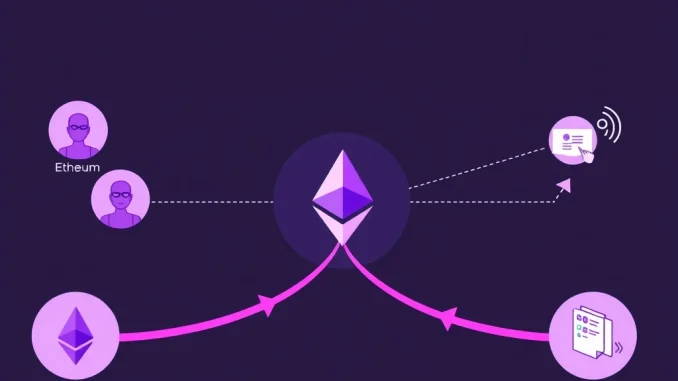
Big news from the heart of the Ethereum ecosystem! The Ethereum Foundation (EF), a pivotal organization supporting the network, has announced a significant internal shake-up. This move is designed to sharpen the focus on critical areas essential for Ethereum’s future growth and adoption. If you’re invested in or building on Ethereum, understanding this restructuring is key to seeing where the network is heading.
Why is the Ethereum Foundation Restructuring its Protocol Team?
According to a recent announcement highlighted by Cointelegraph, the EF has reorganized its internal development structure. The former Protocol Research & Development (PR&D) unit, which played a crucial role in past upgrades, is getting a new identity and a clearer mandate. This isn’t just a name change; it signals a strategic pivot towards specific, high-impact development goals.
The renaming of the unit to simply the “Protocol” team reflects a streamlining and a more direct approach to core protocol development. This restructuring aims to increase efficiency and accelerate progress on technical challenges that are vital for Ethereum to handle mass adoption.
Focusing on Ethereum Scaling and Beyond
The newly organized Protocol team will concentrate its efforts on three primary development areas. These areas represent the frontier of Ethereum development and are crucial for improving the network’s performance, capacity, and usability:
- Scaling Ethereum’s Base Layer: While much of the scaling narrative has shifted to Layer 2 solutions, improvements to the base layer (Layer 1) remain essential. This focus area likely involves continued research and implementation of technologies that can increase the throughput and efficiency of the main Ethereum chain itself, complementing Layer 2 efforts.
- Increasing Blobspace Capacity for Rollups: This is a highly anticipated area following the Dencun upgrade. Blobspace refers to the dedicated data space for ‘blobs’ (Binary Large Objects) introduced by EIP-4844 (Proto-Danksharding). Increasing its capacity is vital for significantly reducing transaction costs and increasing data availability for Layer 2 rollups, making Ethereum transactions cheaper and faster for end-users.
- Enhancing User Experience (UX): For Ethereum to truly go mainstream, interacting with the network needs to become simpler, safer, and more intuitive. This focus area involves improving wallet interactions, reducing friction in decentralized applications (dApps), enhancing security features, and making the overall experience less daunting for new users.
Who is Leading the New Protocol Team?
To spearhead these critical initiatives, the Ethereum Foundation has officially tasked three prominent and experienced developers with overseeing these focus points:
| Developer | Key Focus Area(s) | Known For |
|---|---|---|
| Tim Beiko | Likely involves coordination across areas, potentially UX and general protocol health. | Leading Ethereum’s core developer calls, coordinating network upgrades. |
| Alex Stokes | Likely focused on base layer scaling and consensus mechanisms. | Deep expertise in Ethereum’s consensus layer, proposer-builder separation (PBS). |
| Barnabé Monnot | Likely focused on blobspace and data availability sampling. | Significant contributions to Danksharding research and implementation. |
These developers bring a wealth of knowledge and experience to their respective roles, providing strong leadership for the Protocol team’s objectives.
What Does This Mean for Ethereum Development?
This strategic restructuring by the Ethereum Foundation signals a clear prioritization of the technical hurdles that need overcoming for Ethereum to evolve. By focusing resources and talent on Ethereum scaling, blobspace expansion, and UX improvements, the EF is directly addressing the current limitations that impact cost, speed, and ease of use.
While the announcement also noted that some members of the former PR&D team are leaving the organization, this is a natural part of any restructuring process. The focus remains on the core mission and empowering the streamlined team to deliver results on these vital fronts.
The emphasis on Blobspace is particularly noteworthy, reinforcing the EF’s commitment to making Layer 2 rollups the primary way users interact with Ethereum for everyday transactions. Increased blobspace capacity directly translates to lower fees and more capacity for rollup networks.
In Summary
The Ethereum Foundation’s decision to restructure its core development unit and rename it the Protocol team is a strategic move aimed at accelerating progress on Ethereum’s most pressing technical challenges. By narrowing the focus to base layer scaling, blobspace capacity, and user experience, and placing seasoned developers at the helm, the EF is setting a clear path for future Ethereum development. This targeted approach holds immense promise for enhancing the network’s performance, reducing costs, and making Ethereum more accessible and user-friendly for a global audience. It’s an exciting time for the network as these crucial areas receive dedicated attention.



